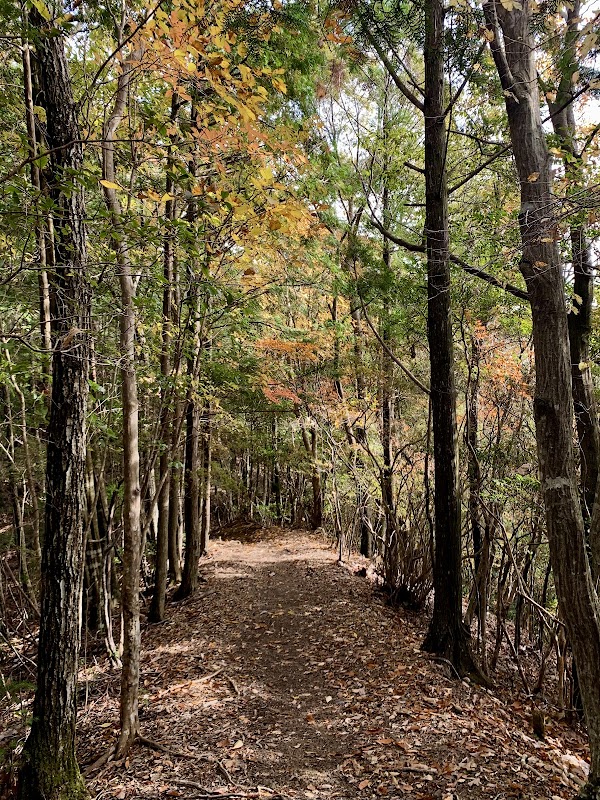
Journey into Tradition: The Kumano Hongu Taisha Spring Festival Experience
Experience the heart-pounding rhythm of the Kumano Hongu Taisha Spring Festival in Tanabe, Wakayama, where ancient rituals meet forested trails. This guide prepares you to enjoy a culturally immersive hike with practical tips for a smooth and memorable adventure.
Hydrate Early and Often
Bring at least two liters of water since natural refill points along the trail are limited; dehydration can sneak up especially under spring humidity.
Wear Grip-Ready Footwear
Expect uneven, rocky terrain; solid hiking boots with good ankle support reduce injury risk and ensure steadier footing.
Timing Matters
Start your hike early to avoid afternoon rain showers and midday crowds at the shrine; mornings offer quieter paths and crisper air.
Pack Lightweight Rain Gear
Spring weather in Wakayama can turn wet without warning; a compact rain jacket and waterproof backpack cover keep gear dry and spirits high.
Journey into Tradition: The Kumano Hongu Taisha Spring Festival Experience
Every spring, the heart of Tanabe in Wakayama pulses with ancient energy during the Kumano Hongu Taisha Spring Festival. This event isn't just a celebration — it’s a journey through history, nature, and ritual, set against the backdrop of the sacred mountains and dense forests that guard the Kumano region. The festival centers around Kumano Hongu Taisha, one of Japan's grandest shrines, offering visitors an immersive blend of spirituality and outdoor adventure.
The approach to the shrine invites you along forested paths where sunlight filters through towering cedars, their trunks standing like quiet guardians. The air hums with the promise of discovery as the nearby Kumano River dares you forward, its currents pushing the spirit of the celebration. This hike, moderate in challenge, stretches approximately 8 kilometers from the base town of Tanabe, with an elevation gain around 250 meters. The trail surface alternates between compact earth and scattered stones, demanding sturdy footwear and attention to footing.
The festival itself unfolds with solemn yet dynamic ceremonies, from ritual dances to the striking display of portable shrines carried through the streets and trail. It’s a vivid interplay of human energy and natural forces, reminding you that this steeped forest is fiercely itself — a realm to be respected rather than tamed.
Timely preparation enhances the experience. Starting early in the day helps avoid midday humidity and crowds. Carry at least two liters of water, as refilling options are sparse en route. A breathable, moisture-wicking outfit combined with durable hiking boots provides the best defense against the sometimes uneven terrain. Pack light, but don't skip rain gear — spring showers arrive unannounced, lending an unpredictable pulse to the day.
Pausing along the trail reveals natural performance: mosses draped like green velvet on ancient stones, clusters of wild azaleas brightening shaded clearings, and the distant song of birds weaving through the trees. The shrine grounds themselves carry an imposing calm, where the scent of incense and the sound of temple bells punctuate moments of reflection amid the bustle.
This journey is not for conquering but for participating — engaging with a living tradition amid an environment that commands attention. Whether you’re a casual hiker or a seasoned trekker, the Kumano Hongu Taisha Spring Festival offers a rare chance to walk lightly through history and nature, both vivid and enduring.
Nearby Trips
All Adventures
Boat Charters
Water Activities
Adventures near Tanabe, Wakayama
Discover the unique and memorable adventures that make Tanabe, Wakayama special.
Frequently Asked Questions
What is the significance of the Kumano Hongu Taisha Spring Festival?
The festival honors the kami (spirits) of the Kumano Hongu Taisha Shrine through rituals that blend Shinto traditions with local culture, symbolizing renewal and community bonding deeply rooted in Wakayama’s history.
How difficult is the hike to Kumano Hongu Taisha during the festival?
The hike covers roughly 8 kilometers with moderate elevation changes; it requires a moderate fitness level and some hiking experience, but the trail is well-marked and maintained.
Are there any special wildlife or plants to look out for during the festival?
Spring ushers in vibrant azaleas and the calls of Japanese bush warblers, while the trail is lined with towering cedar trees that seem almost alive with quiet energy.
Can I access food and drink along the trail?
Options are limited during the hike itself, so carrying sufficient water and light snacks is recommended; Tanabe town offers plenty of restaurants before and after your trek.
Is the festival family-friendly, and can children participate?
Yes, the festival and trail are accessible for families with children who are prepared for a moderate hike, and the cultural activities provide enriching experiences for all ages.
What environmental considerations should visitors observe during the festival?
Respect marked trails to protect undergrowth, avoid littering, and be mindful that this is an active sacred site — keeping noise levels low honors the spirits and local customs.
Recommended Gear
Hiking Boots
Provide sturdy support and grip for rocky, sometimes slick paths between Tanabe town and the shrine.
Water Bottle or Hydration Pack
Ensures you stay hydrated throughout the hike, particularly important during warmer months.
Light Rain Jacket
Protects you from sudden spring showers common in Wakayama.
Compact Daypack
Carries all essentials like water, snacks, and rain gear without weighing you down.
Local Insights
Hidden Gems
- "The lesser-known viewpoint above the shrine offers panoramic views of the Kumano River valley, rewarding a short detour."
- "A quiet moss-covered stone lantern path leading to a small secondary shrine reveals an intimate slice of ritual practice."
Wildlife
- "Japanese macaques occasionally emerge in the higher forested sections."
- "The elusive copper pheasant, native to this region, can be spotted in early mornings."
History
"Kumano Hongu Taisha is one of the three grand Kumano shrines, central to the pilgrimage routes dating back over a thousand years, creating a living connection between modern visitors and Japan’s spiritual past."
